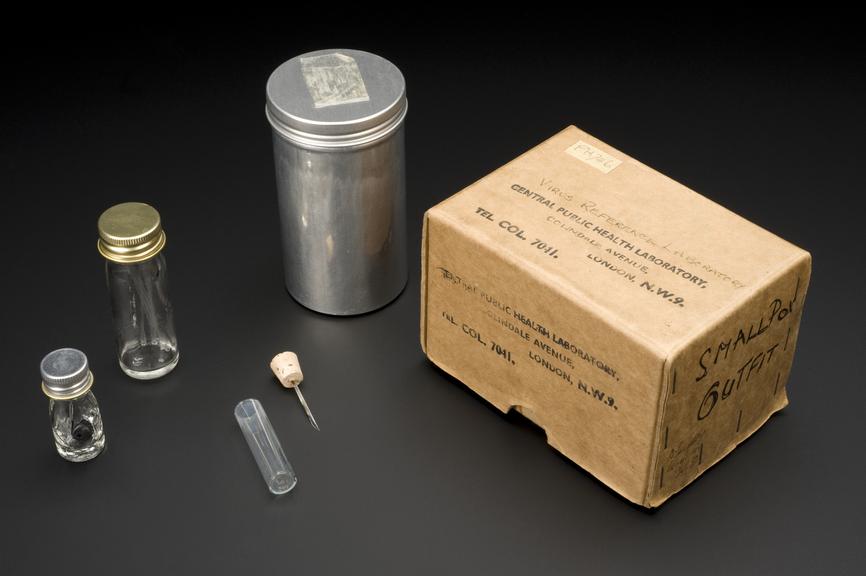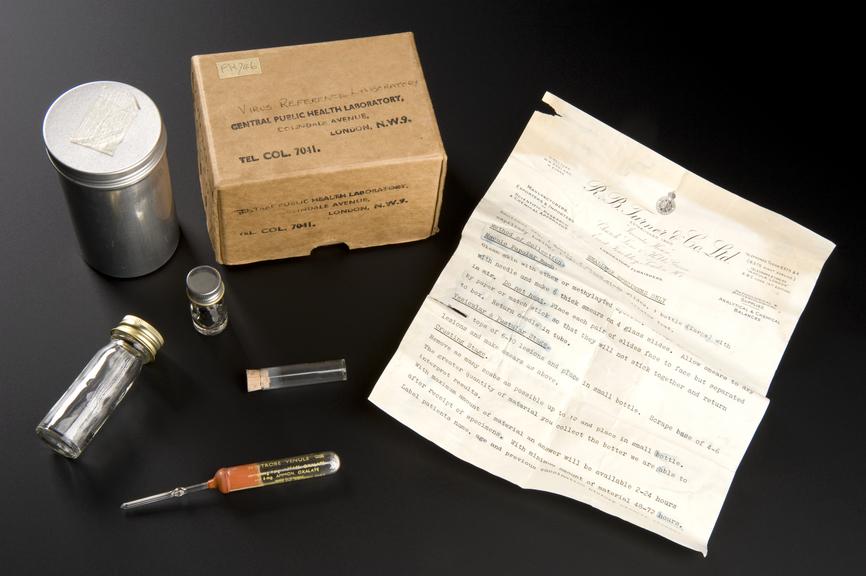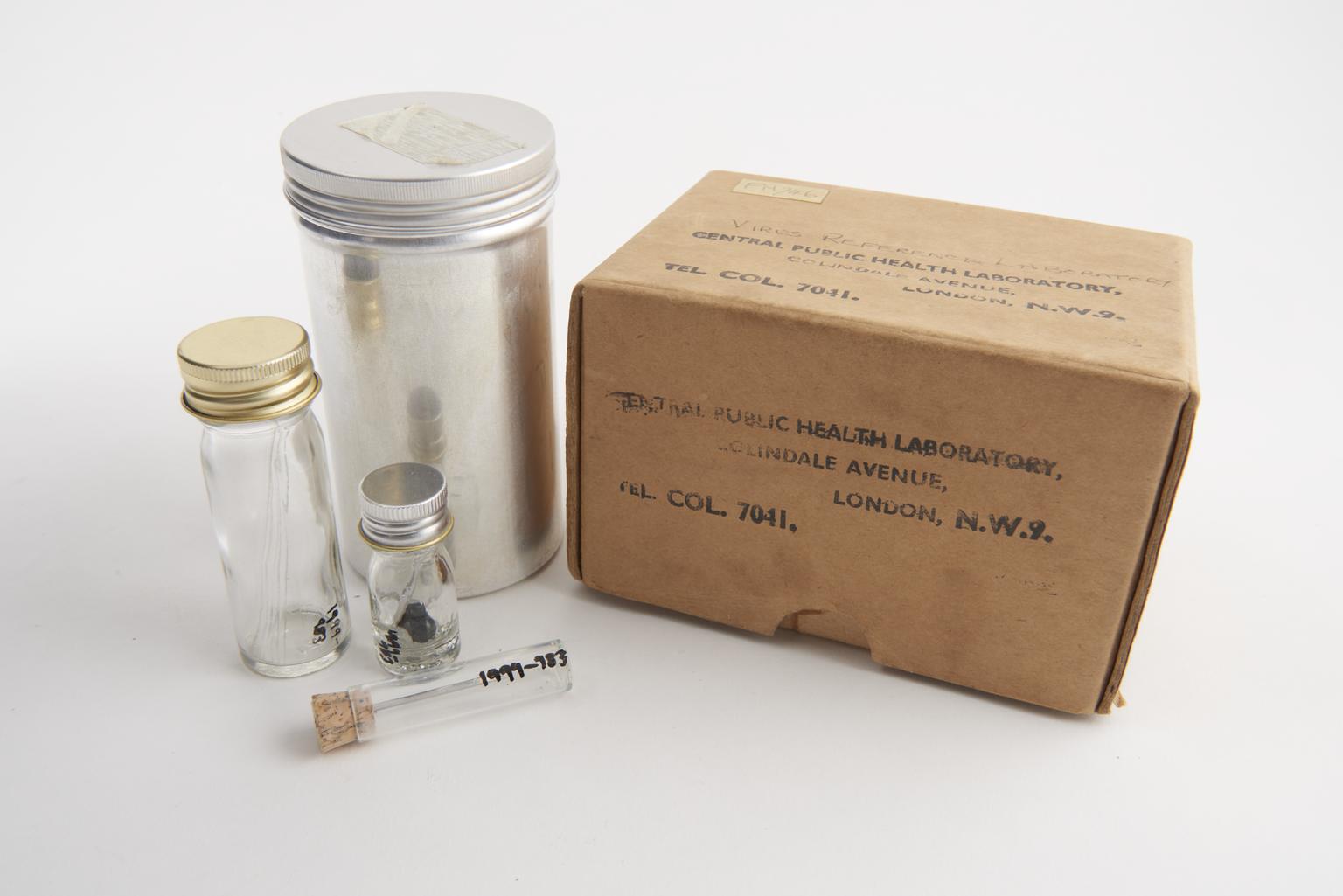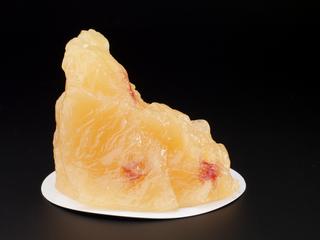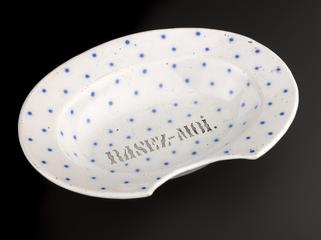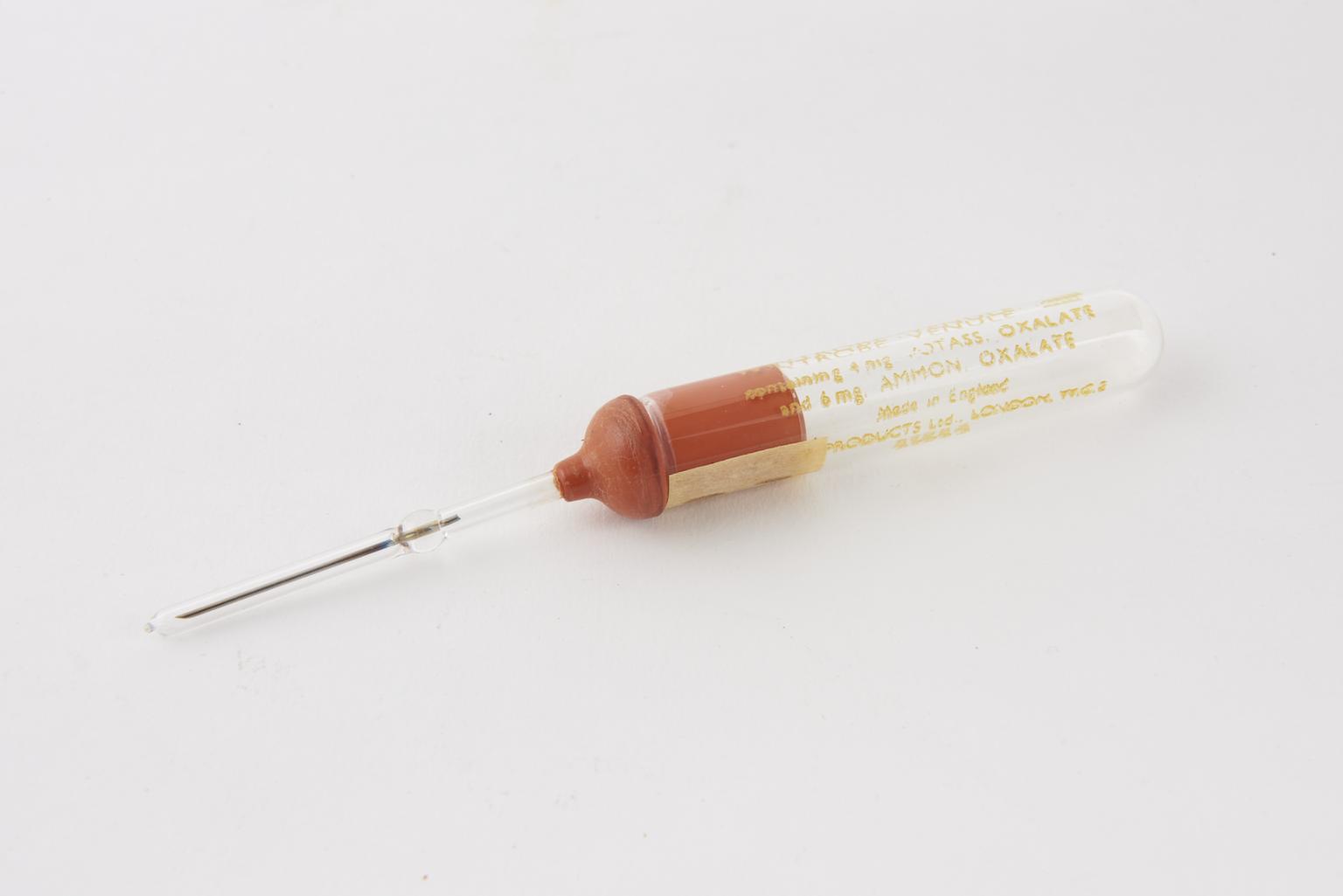
Part of a Smallpox Diagnosis Kit
Glass capillary tube with needle, part of kit for taking specimens for the diagnosis of smallpox, 1965-1970.
More
Early diagnosis of smallpox helped prevent the spread of the disease. This kit was used by doctors in general practice surgeries and by school nurses. Samples were taken from skin complaints, including rashes, pustules and scabs. They may have been consistent with a stage in the development of smallpox. The rubber teat and capillary tubes also collected any fluid from the skin. The samples were sent by post to the Virus Reference Laboratory at the Central Public Laboratory in London. The results could take between two and 72 hours.
Once a major global killer, smallpox is the only disease to have been completely eradicated by a sustained immunisation programme.
- Materials:
- glass and metal (unknown)
- Object Number:
- 1999-983/1
- type:
- smallpox diagnosis kit
- Image ©
- The Board of Trustees of the Science Museum


